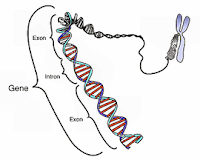January 12th, 2011 by PJSkerrett in Better Health Network, Health Tips
No Comments »

Here’s an important equation that all of us — doctors include — should know about healthcare, but don’t:
More ≠ Better
“More does not equal better” applies to diagnostic procedures, screening tests meant to identify problems before they appear, medications, dietary supplements, and just about every aspect of medicine.
That scenario is spelled out in alarming detail in the Archives of Internal Medicine. Clinicians at the Cleveland Clinic describe the case of a 52-year-old woman who went to her community hospital because she had been having chest pain for two days. She wasn’t having symptoms of a heart attack, such as shortness of breath, unexplained nausea, or a cold sweat, and her electrocardiogram and other tests were fine. The woman’s doctors concluded that her chest pain was probably due to a muscle she had pulled or strained during her recently begun exercise program to lose weight.
To “reassure her” that she wasn’t having a heart attack, the emergency department team recommended she have a CT scan of her heart. This noninvasive procedure can spot narrowings in coronary arteries and other problems that can interfere with blood flow to the heart. When it showed a suspicious area in her left anterior descending artery (a key artery nourishing the heart), she underwent a coronary angiogram. This involves inserting a thin wire called a catheter into a blood vessel in the groin and deftly maneuvering it into the heart. Once in place, equipment on the catheter is used to make pictures of blood flow through the coronary arteries. Read more »
*This blog post was originally published at Harvard Health Blog*
January 3rd, 2011 by Michael Kirsch, M.D. in Opinion, Research
1 Comment »

 The medical profession’s ability to diagnose far exceeds its ability to effectively treat the conditions discovered. Consider arthritis, Parkinson’s disease, irritable bowel syndrome, strokes, emphysema, and many cancers.
The medical profession’s ability to diagnose far exceeds its ability to effectively treat the conditions discovered. Consider arthritis, Parkinson’s disease, irritable bowel syndrome, strokes, emphysema, and many cancers.
When a physician orders a diagnostic test, ideally it should be to answer a specific question, rather than a buckshot approach. A chest X-ray is not ordered because a patient has a cough. It should be done because the test has a reasonable chance of yielding information that would change the physician’s advice. If the doctor was going to prescribe an antibiotic anyway, then why order the chest X-ray?
Physicians and patients should ask before a test is performed if the information is likely to change the medical management. In other words, is a test being ordered because physicians want to know or because we really need to know the results?
Does every patient with a heart murmur, for example, need an echocardiogram, even though this test would be easy to justify to patients and to insurance companies? If the test won’t change anything, then it costs dollars and makes no sense. Spine X-rays for acute back strains are an example of a radiologic reflex. Read more »
*This blog post was originally published at MD Whistleblower*
October 14th, 2010 by Steve Novella, M.D. in Better Health Network, Health Policy, Opinion, Quackery Exposed, Research
1 Comment »

Any promoter of science-based medicine often faces the question: “What’s the harm?” What is the harm if people try treatment modalities that are not based upon good science, that are anecdotal, or provide only a placebo benefit? There are generally two premises to this question. The first is that most “alternative” placebo interventions are directly harmless. The second is that direct harm is the only type worth considering. Both of these premises are wrong.
The pages of Science Based Medicine (SBM) are filled with accounts of direct harm from unscientific treatments: Argyria from colloidal silver, death from chelation therapy, infection or other complications from acupuncture, burns from ear candleing, stroke from chiropractic neck manipulation — the list goes on. You can read anecdotal accounts of such harm on the website, whatstheharm.net.
Of course, as we often point out, harm and risk is only one end of the equation — one must also consider benefit. It is the risk-benefit ratio of an intervention that is important. But generally we are talking about interventions that lack any evidence for benefit, and therefore any risk of harm is arguably unacceptable. Read more »
*This blog post was originally published at Science-Based Medicine*














